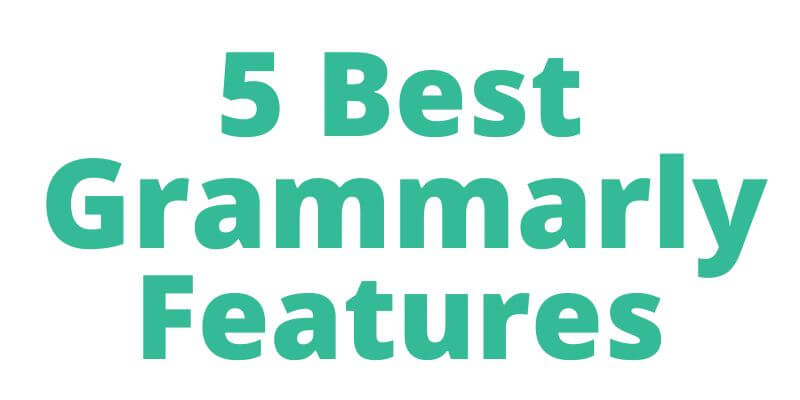Eliminate Your Fears And Doubts About Keyword Research

You have started your blogging journey and have done some research on how to improve your organic traffic and ranking of your blog and have come across this word Keyword Research,
but have not yet understood what exactly it is and how it works. Right?
Well, you have come to the right place.
In this article, I will give a beginner-friendly step-by-step guide on what is Keyword Research and How to use it to improve your organic traffic & ranking.
Keyword Research made easy and simple for you even if you are a beginner.
What is Keyword Research?
To understand Keyword Research, first, we need to understand the word Keyword.
Keyword in the simplest language is the focus word of your blog content, which does the work of highlighting your content to people who are looking for queries related to that word on search engines like Google & Bing.
To rank and get more organic traffic, systematic use and placement of these keywords in your blog is very important.
So to find the right keyword in your niche, which has more search volume and less difficulty is called Keyword Research.
To simplify, Keyword Research in Blogging SEO can be understood by simple expression.
People Looking for Queries related to particular keyword > Search Engine > Your Blog Content (Keyword Optimized).
Why is keyword Research Important?
Creating high-quality valuable content is important, but getting it in front of the targeted audience is even more important.
To simplify, when doing blogging as a business getting organic traffic is very important because the traffic is free and is for a long time.
Paid ads are good, but they work only until you keep pouring money.
As a beginner when getting started this is hardly possible.
Getting organic traffic is a long-term process and keyword research is the first step of it.
Keyword research gives a clear idea about what the targeted audience is looking for, and accordingly what you can do to get more organic traffic.
Once you start using keyword research for SEO, you start seeing traffic growth, understand market trends, and increase your customer acquisition and conversion.
How to understand the Intent of Search Queries?
To begin with Keyword Research, first, you need to understand the search intent of people who are looking for that keyword in the search engine.
There are basically three types of search query intent that you can categorize your blog into.
First, you need to understand in what category your blog content fits and then you can start with your Keyword Research.
Let’s take a look at the types of Search Query Intent people to do
1. Informational Search Query
In this type of search query, the main intent of people is to get information about the topic.
Whenever you are doing content that is research-based which is going to provide a guide, step by step process, or very specific detailed helpful information, you can categorize your blog content in Informational Search Query
Examples of these searches would be
- How to start Keyword Research for Blogging
- What is Keyword Research
- How to use keyword Research Tools

2. Navigational Search Query
In this type of query, the intent of people is just to find and navigate to some specific website by either searching relevant keywords or website names in the search engines.
Examples of these queries would be
- You can end up finding Spotify when you are trying to search for some podcast platforms. In this, the intent was to find a podcast platform but was not aware of Spotify. So this helped the user to navigate to his desired site.
- Direct brand name search, like searching for amazon, Nike, youtube, Instagram, etc.

3. Transactional Search Query
In this type of query the intent of people is very clear, they either want to make a purchase or want to become a lead by signing up for a particular program. In this type of search, the keywords like buy, order, purchase, comparison, download, best, vs., etc are dominantly used.
Examples of these would be
- Best android phone under 500$
- iPhone 13 vs Samsung S21
- Best keyword research tool

How to do Keyword Research?
Step 1 – Researching and making a list of topics that you are going to blog about in your niche.
Once you are done choosing your niche, the first thing you should do is to make a list of your possible blog topics that you either have good knowledge or can easily do good research around that topic.
I recommend using a notebook or excel sheet to keep a record of all the topics.
Let’s take an example, if your niche is Online marketing you could make a list of blog topics like
- Understand copywriting before you regret
- Email marketing tricks to grow your list
- How to use Content Marketing for Make Money Online
Once you make a list of 5 to 10 topics like these, then you can start doing keyword research for each topic individually.
To get started you can do research for possible blog topics related to your niche on Youtube, forums, Quora, Facebook groups, for products you can use Amazon reviews, etc.
Step 2 – Finding Keywords for those Topics
Once you are done with your possible blog post topics, you need to start doing keyword research.
For this, you need to use a keyword research tool. There are many keyword research tools in the market, you can use any of them.
Just for your knowledge, you can use KWFinder, Google Keyword Planner, Ubersuggest, Ahrefs, SEMrush, MOZ.
Before you start using Keyword Research tools understand these terminologies.
Trend – The search volume trend (mini graph) in the last 1 or up to 12 months
Search – The average monthly search volume in the last 1 or up to 12 months
CPC – The average cost per click of the listed keyword in Google Adwords; e.g. $2.45
PPC – The level of competition in PPC advertising (min = 0; max = 100); e.g. 3 (low)
KD / SD – The SEO difficulty of a keyword
PD – Paid Difficulty, the higher the number higher is competition.
I personally use Google Keyword Planner and Ubersuggest, so let’s take a look at how this actually looks when doing research
So, if we search for content marketing in both google keyword planner and ubersuggest we see somewhat similar results and some more suggestions to look for.
In Google, we see 10K to 100K avg monthly searches, low competition, and more keyword suggestions related to content marketing.

In ubersuggest we get around 14k avg monthly searches, also in ubersuggest we get little more details and suggestions, estimated visits, backlinks, and also content ideas to make your process a little easy, etc.


Step 3 – Identify the volume, competition, and intent of the Keyword
Once you make a list of possible keywords in your niche blog topic, you need to evaluate these three things with your keywords.
- Volume
Search Volume is avg approximate value. In all the keyword tools it is clearly mentioned that the search volume is just the approximate value and not specific
Search volume is not directly proportional to the traffic that it will bring, but we still need to evaluate the avg monthly volume a keyword gets.
Simply put, this gives us an idea of whether anyone is even looking or searching for that keyword in search engines like google, bing.
No one wants to do content around a keyword that no one is searching for.
Seasonal variation in the search volume is also very important to take into consideration. This gives you an idea of whether you want to target a keyword which seasonal.
Example: Search Volume For Halloween costumes will not be throughout the year.
- Competition
In all the keyword research tools you get SEO difficulty metric. This metric allows you to know the difficulty that it will have for you to rank on the first page of google.
For some reason the SEO keyword difficulty metric results always come different on different keyword research tools, so you have to take avg of 2 to 3 different tools before you come to conclusion.
- Intent
To rank well, understanding the user intent for the search is very important.
To do this, you need to analyze whether the keyword used during the search by the searchers on Google is intended towards addressing or solving the problem they are looking for.
For this research use the google search engine yourself. Search the keyword you have and check the results.
From this, you will understand “ What intent you had set for the keyword” vs “what the search engine is showing”
Once you implement this method in your keyword research you will slowly start understanding the keyword search intents, which will help you in ranking well in Google.
How to find, narrow down and choose Keyword?
- The SERP ( Search Engine Results Page) Factor.
There are 4 different snippets that Google gives when you search any keyword, be it short tail or long tail.
You can use them to understand the keyword intent, volume, and the content made around them.
Let’s take a Look at these 4 snippets
- Google Search Images
When you search a keyword on Google and get the images as the top result on the searched page, this is called image packs.
When quality content is made all around the images and is answering the search query intent they come on the top of the search page.
Open them & see what is the content around that image, see the title of that image. From this you will get the idea about what the keyword theme is and how they are using it.

2. List Snippets
When the content is made with clear step-by-step instructions answering the search query intent they get displayed on the top of the search page as a list of points.
These are called listicles. If your searched keyword is showing such a list, open the content note down the keywords, and study the content made around that keyword.

3. Paragraph Snippets
When you search long tail or short tail keyword and get a quick short answer, a short paragraph as a top result on the search page is called a paragraph snippet.
Google ranks such posts when you answer the search query around the keyword in clear and easy language.
You can use this to analyze your own keyword and content around it.

4. Video Snippets
When you have created a video around a keyword and posted it on YouTube and also on your website answering search query intent, Google shows a videos snippet.
If this is what you want to make, you can use this to create your content by identifying the keyword used in the content and for the video title.

- Trying variations with Short tail and long-tail keywords
When you are at the final stage of the keyword research you need to do basic research for long tail and short tail keyword variations.
Simply put, short tail keywords should be used as an immediate success, to get more volume and traffic to the blog page,
And long-tail keywords should be used with the aim of long-term goals, which will bring good organic traffic slowly but definitely.
Example,
Search Variation 1 (Short Tail)– Laptops
Search Variation 2(Long Tail) – Samsung Laptop under $ 500 best for video editing.
The first variation will bring good traffic and volume but the searcher’s intent will not be clear, leading to less conversion and acquisition.
In the second variation, the intent is very clear and specific, in this case, you will get low but high-quality traffic.
The person searching with such specific keywords already has intent to buy leading to high conversion and acquisition rates.
- How your competitors are ranking for those keywords
Use your competitor for research purposes, but never copy what exactly they are doing, because it will only drive your traffic away.
It is good to know how they are ranking for a keyword that even you are trying to rank.
This will allow you to make changes, modify your content around that keyword which will eventually help you to rank your content.
For competitor analysis I personally use Ubersuggest, but there are many keyword tools that offer this feature, you can use any of them.
Once you put your keyword in the tool, it will give all the details of the keyword and the pages that are ranking for that keyword.
An analysis of these pages that are ranking for the keyword will help you understand what your approach should be, and how you should create your content that will rank.
Final Thoughts
When you are starting, this might seem a little overwhelming, but with practice and doing it again and again you understand this actually is not that difficult.
I hope you liked this step-by-step guide and found it helpful.
Just go up and go through it again, if you still feel a little confused.
Just understand that keyword research is not all in all of the blogging, but just one part of it.
Your main focus should always be to create high-quality valuable content.
Use keyword research to narrow down topics, as a guide that will help you rank
Your content.
Keyword Research Made Easy and Simple for you, so make full use of this article and start your keyword research.




